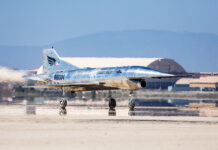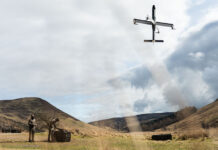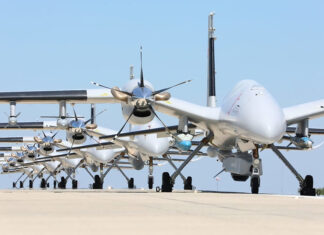A U.S. Air Combat Command accident investigation board determined the cause of a crash of a Predator MQ-1 B unmanned aerial vehicle at Southern California Logistics Airport during an April 20 training mission was human error. According to the report, the crash was caused by a student pilot’s failure to recognize the aircraft’s speed was too low for the weather conditions and aircraft configuration. Unexpectedly difficult wind conditions at the field during the landing contributed to the mishap, officials said.

UAV Crash statistics have shown that most accidents involving remote piloted UAVs are caused in the takeoff and landing phases. To eliminate this risk most modern UAVs are equipped with automatic take-off and landing systems (ATOL). However, the U.S. Air Force insists on flying their UAVs with remote pilots.
The Predator crashed on April 20th was an Air National Guard aircraft from the 163rd Reconnaissance Wing at March Joint Air Reserve Base, Calif., operated by members of the 3rd Special Operations Squadron under the supervision of instructors from the 163rd Operations Group Formal Training Unit also based at this base. The investigation found that during final approach the Predator stalled after approaching landing at insufficient air speed. This resulted in a hard landing that exceeded design limitations for the aircraft. Upon impact, the left wingtip dragged on the ground, causing the aircraft to leave the prepared runway surface and subsequently break apart. While no injuries occurred as a result of the accident, the aircraft and one inert Hellfire training missile were a total loss. The estimated damage to government property, including a runway light, is valued at about $3.7 million.



















